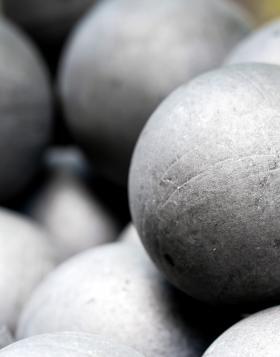
A ball mill is a type of grinding machine that uses balls to crush and grind material. The ball mill is made up of a cylinder called the mill shell that turns on a horizontal axis. The mill is filled to a certain filling degree with balls and the mill shell is protected by liners. The materials to be reduced in size are added into the mill and the movement of the mill and the interaction, collisions and attrition between the grinding balls that move inside the mill and the material ensure the material is ground down to the desired size.
Grinding balls are used to grind materials into fine powders in dry environments or pulp in wet environments.. The grinding balls made from different materials (stainless steel and ceramics) may be used for the different applications. Grinding balls and beads can be used to grind ores, rock, limestone, coal, minerals, pigments & paints, cosmetics, food, etcetera.
Grinding balls are used to grind materials. A grinding ball works on the principle of impact and attrition. Earlier balls were made from forged steel. These days they are much more complex or scientific and Magotteaux manufactures them in a large range of alloys which are especially adapted to the material to be ground, the operating parameters of the mill and the wear mecanisms present, theycreating the lowest wear and a far greater efficiency in production. We will give you advice on which balls are best for your specific needs.

Magotteaux has an experienced team that is ready to answer all your questions about grinding balls. Don’t hesitate; contact us without delay to discover how we can solve your issues today.